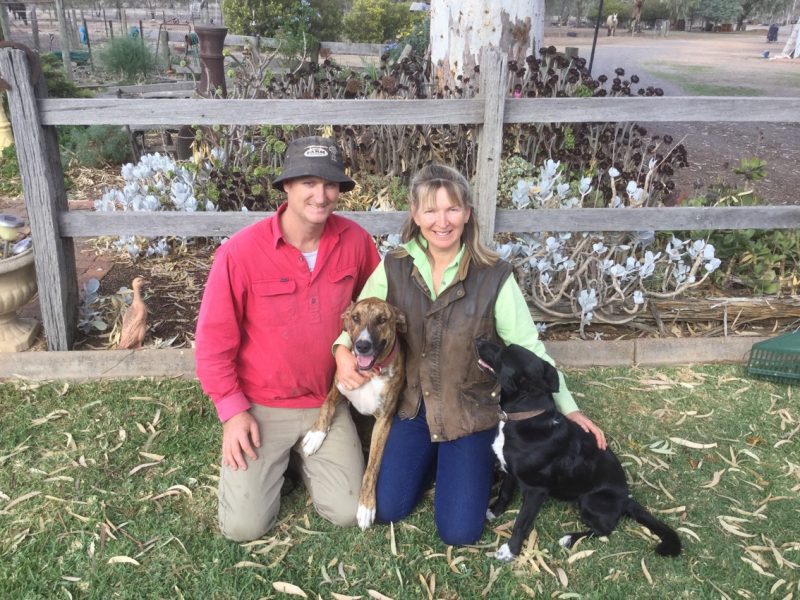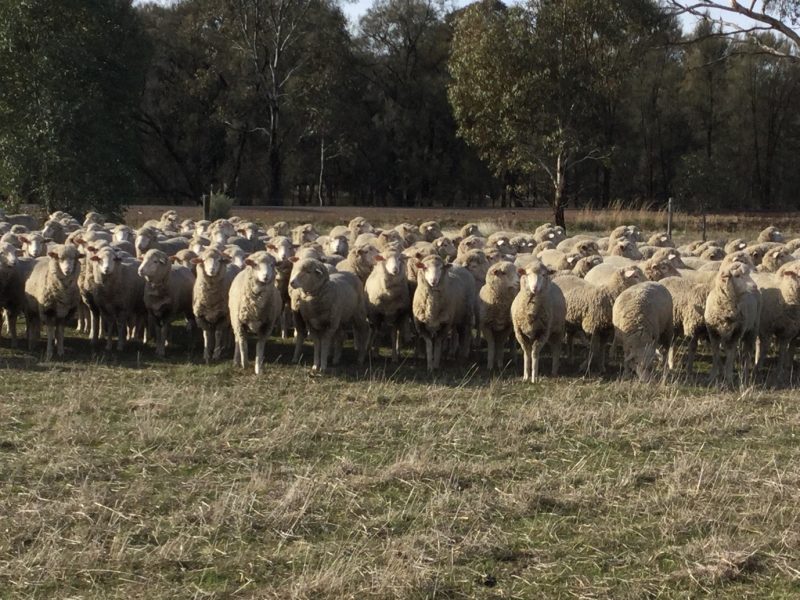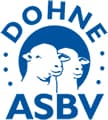The ‘Real Deal’ for Victorian Breeders
Original article written by Xanthe Gregory. Original photo courtesy of Linda Taylor.
LINDA TAYLOR AND TONY WHEAT
CALLAWADDA, VICTORIA
“I couldn’t believe the difference in them when I was running both mobs. I had to end up separating them because the Dohnes were in really good nick and the Merinos went behind the eight ball.”

Linda Taylor and partner Tony Wheat with their dogs.
THE DOHNE sheep is the result of highly selective breeding, which developed a superior dual purpose sheep that commercial breeders Linda Taylor and Tony Wheat swear by. Linda’s family were proud Merino breeders on their 3,000 acres in Callawadda, Victoria since 1950. Linda returned to the property in 1995 after working overseas. They now have a sharefarmer onboard for the rotational cropping enterprise growing canola, wheat, barley and beans. This integrates with their increasing self replacing 18-19 micron Dohne flock.
Their Merino flock had the traditional wrinkles on the necks and bodies, so as a result they started looking elsewhere to plain them down. After speaking to their Dohne breeding neighbour, in 2010 they bought their first Dohnes. It was in 2011 when they had terrible floods that their troubles with body strike on the Merinos encouraged Linda and Tony to phase them out altogether.
For five years they ran a combined Merino and Dohne flock, which highlighted just how tough the Dohne is, in comparison.
“I couldn’t believe the difference in them when I was running both mobs,” Linda said.
They had trouble with the Merino’s condition, particularly during difficult seasons, whereas the Dohnes thrived.
“We ended up separating them because the Dohnes were in really good nick, whereas the Merinos were behind the eight ball and required extra maintenance,” Linda said.
Switching to Dohnes is a decision they don’t regret as they’ve improved growth and fertility rates in both good and bad seasons. “They’re just much better doers, especially in the tough seasons,” Linda said.
They have also been able to push their lambs out the door much earlier, this year selling off the May/ June drop wethers at around five months old in November.
“With increased growth rates the lambs finish earlier resulting in a shorter turn off period for our wethers, leaving more feed on offer for our ewes,” Linda said.
The advantages of the switch to a full Dohne flock are endless for Linda and Tony’s pastoral company. They have maintained their wool quality, improved body structure and sheep have helped clean up their paddocks, even eating the paddy melons on their cropping land.
“They’re non-selective grazers so it’s fairly easy to run on that side of things,” Linda said. “They do well on a lot less than Merinos,” she continued.
Linda and Tony have also found they don’t need to de-stock as heavily as with the Merinos during dry seasons. With a lucky 2018, they’re counting their blessings for being right on the edge of the
drought’s impacts. “We’ve had a very good season considering what little rain we did get,” Linda said.
Breaking traditional farming practices can be a big decision for many. Living on long-standing Merino breeding land, Linda and Tony made the educated decision to change their breeding practices and stand by their decision. They now shear at 8 month intervals, which is 3 times in 2 years, averaging a staple length of between 60-70mm. With careful ram selection and classing
ewes for wool traits, they have maintained an average 17.5 to 19 micron with a high comfort factor.
“They obviously tick a lot of boxes for me and you can do really well with them, I wouldn’t go back now,” Linda said.
For them, the only way is onwards and upwards with their Dohne sheep and they are hoping to build their numbers up to around 2,000.

Linda’s Dohne Flock Ewes.










 Facebook
Facebook YouTube
YouTube Instagram
Instagram